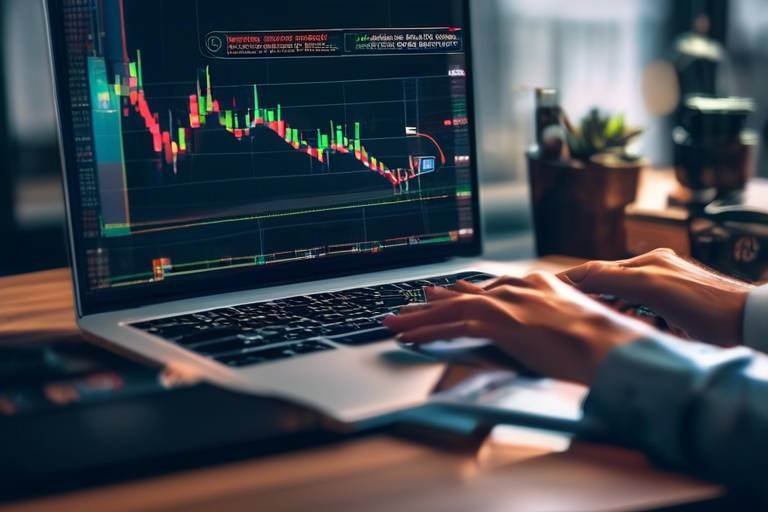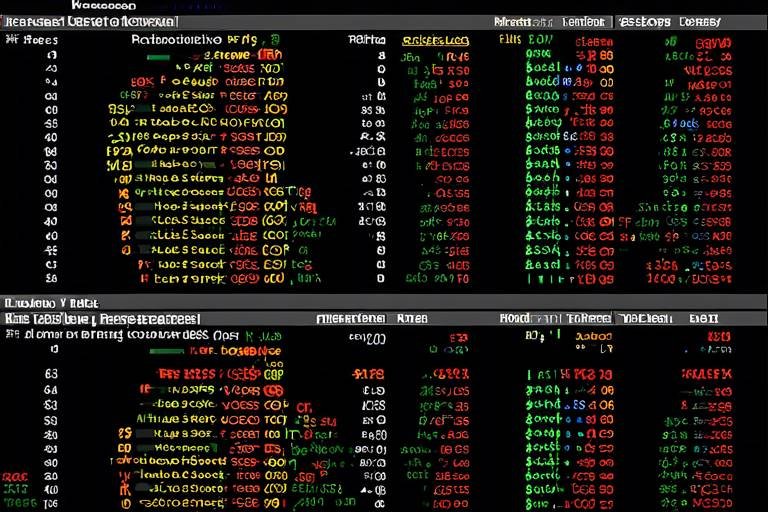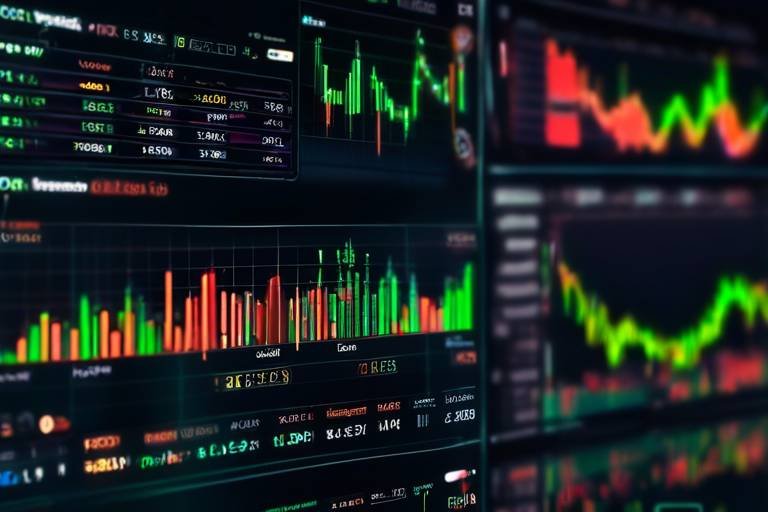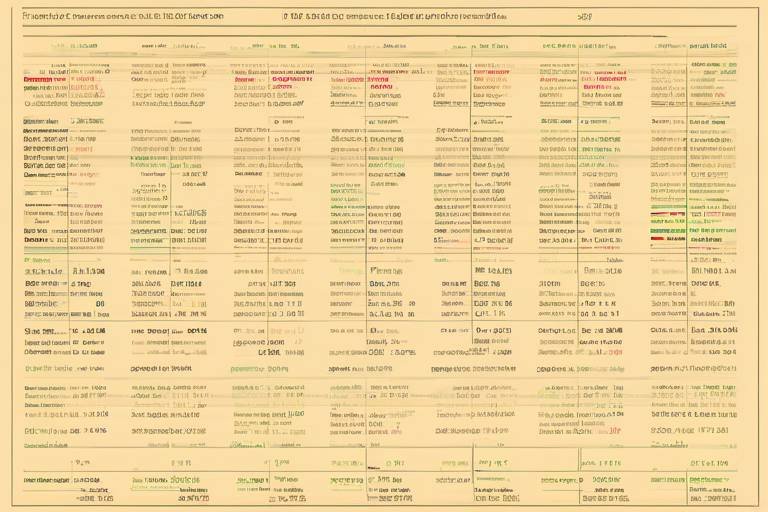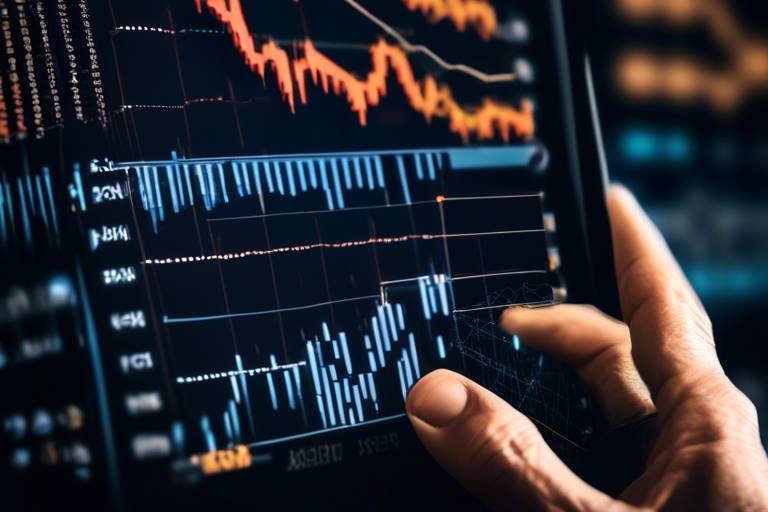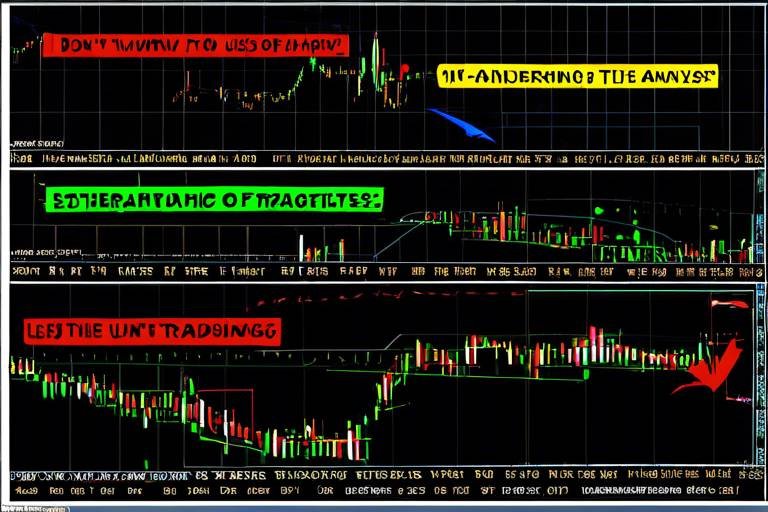Understanding the Role of Liquidity in Technical Analysis
In the world of trading, liquidity is like the lifeblood of financial markets. It determines how easily assets can be bought or sold without causing drastic changes in their price. Imagine trying to sell a rare collectible; if there are few buyers, you might have to drop the price significantly to make a sale. This analogy holds true in trading—liquidity can either facilitate smooth transactions or create chaos in price movements. In this article, we'll dive deep into the significance of liquidity in technical analysis, exploring how it influences market behavior, trading strategies, and ultimately, price movements. By understanding liquidity, traders can make more informed decisions, enhancing their chances of success in the fast-paced world of trading.
Liquidity is not just a buzzword; it’s a critical factor that shapes the financial landscape. When we talk about liquidity, we’re referring to how quickly and easily an asset can be converted into cash without affecting its market price. This aspect is vital for traders because it directly impacts their ability to enter and exit positions effectively. For instance, in a highly liquid market, a trader can execute a large order without significantly moving the market price. Conversely, in a less liquid market, even a small order could lead to substantial price fluctuations. In essence, liquidity affects:
- Execution Speed: How quickly a trader can enter or exit a position.
- Price Stability: The consistency of asset prices during trading.
- Market Efficiency: The degree to which current prices reflect all available information.
Understanding these factors can help traders navigate the complexities of the market, making informed decisions that align with their trading strategies and risk tolerance.
Liquidity can be broadly categorized into two types: market liquidity and funding liquidity. Each type plays a distinct role in the trading environment, and comprehending these differences is essential for any trader looking to thrive in various market conditions.
Market liquidity refers to the ease with which assets can be bought or sold in the market without causing a significant impact on their price. Think of it as the smoothness of a road; the smoother the road, the faster and easier it is to travel. Factors that contribute to market liquidity include the number of buyers and sellers in the market, the volume of trades, and the presence of market makers. A market with high liquidity is characterized by tight bid-ask spreads and a large volume of transactions, making it easier for traders to execute their orders at desired prices.
Different order types can significantly impact liquidity. For instance, market orders are executed immediately at the current market price, which is beneficial in liquid markets. However, in illiquid markets, they can lead to slippage—where the execution price differs from the expected price. Limit orders, on the other hand, allow traders to specify the price at which they want to buy or sell, providing more control but potentially leading to missed opportunities if the market moves quickly. Understanding how to utilize these order types effectively can enhance trading strategies in both liquid and illiquid markets.
Liquidity providers are essential players in the financial markets, acting as intermediaries who facilitate trading by offering to buy and sell assets. They play a crucial role in maintaining market efficiency and stability. By continuously quoting prices and providing liquidity, these entities help ensure that traders can execute their orders without significant delays or price distortions. In many ways, they are the unsung heroes of the trading world, keeping the wheels of commerce turning smoothly.
Funding liquidity, on the other hand, relates to the availability of capital to finance trades. It’s like having enough fuel in your car to reach your destination; without it, you’re stuck. In trading, if capital is scarce, traders may struggle to enter or maintain positions, leading to increased market volatility. Understanding funding liquidity is crucial, especially during times of financial stress when capital can become tight, significantly impacting market behavior and trader psychology.
The relationship between liquidity and price movements is a fascinating aspect of market dynamics. When liquidity levels fluctuate, they can lead to significant price changes, affecting trading strategies. For instance, during periods of high liquidity, prices tend to be more stable, allowing traders to make confident decisions. However, when liquidity dries up, even minor news can trigger sharp price swings, creating both opportunities and risks for traders.
Generally, higher liquidity correlates with lower volatility. Think of it this way: in a crowded marketplace, it’s harder for a single voice to dominate; similarly, in a liquid market, large trades are absorbed more easily, leading to smoother price action. Conversely, low liquidity can result in wild price swings, making it essential for traders to monitor liquidity levels closely to gauge market conditions and adjust their strategies accordingly.
Liquidity gaps are another critical concept for traders to understand. These gaps occur when there is a sudden drop in liquidity, leading to a lack of available buy or sell orders at certain price levels. This can create significant trading opportunities or risks, depending on how traders navigate them. Identifying liquidity gaps requires keen observation and a deep understanding of market behavior, allowing traders to capitalize on potential price movements effectively.
What is liquidity in trading?
Liquidity refers to how easily an asset can be bought or sold in the market without affecting its price significantly.
Why is liquidity important?
Liquidity is crucial because it affects execution speed, price stability, and market efficiency, all of which are vital for successful trading.
How can I measure market liquidity?
Market liquidity can be measured through metrics such as bid-ask spreads, trading volume, and the number of active market participants.
What are liquidity gaps?
Liquidity gaps occur when there is a sudden drop in the number of buy or sell orders at specific price levels, leading to potential trading opportunities or risks.

The Importance of Liquidity
Liquidity is often described as the lifeblood of financial markets. Imagine trying to sell a hotcake on a cold winter day; if no one wants it, you’re stuck with it. Similarly, in trading, liquidity determines how easily you can buy or sell an asset without causing a significant change in its price. It’s not just about having a lot of buyers and sellers; it’s about how quickly and efficiently trades can be executed. In essence, liquidity plays a pivotal role in shaping market behavior, influencing everything from execution speed to the stability of asset prices.
Why does liquidity matter so much for traders? Well, think of it this way: when liquidity is high, it’s like a bustling market where everyone is eager to trade. You can enter or exit positions with ease, which translates to better prices and lower costs. On the flip side, in a market with low liquidity, it’s akin to a ghost town. You might find it challenging to sell your asset without dropping the price significantly, resulting in slippage. This can be a nightmare for traders, especially when they need to react quickly to market changes.
Moreover, the level of liquidity can significantly affect trading strategies. For instance, day traders thrive in liquid markets because they rely on quick price movements to make profits. In contrast, long-term investors may not feel the immediate impact of liquidity but should still consider it when planning their investments. A lack of liquidity can lead to increased volatility, which can be detrimental to both short-term and long-term trading strategies.
In summary, understanding liquidity is crucial for anyone involved in trading. It not only affects how trades are executed but also influences market sentiment and price dynamics. By keeping an eye on liquidity levels, traders can make more informed decisions, optimize their strategies, and ultimately improve their chances of success in the ever-evolving financial landscape.

Types of Liquidity
When diving into the world of finance, one cannot overlook the concept of liquidity. It’s like the lifeblood of the market, flowing through every transaction and influencing how traders operate. There are various types of liquidity, each playing a pivotal role in shaping market dynamics. Understanding these distinctions is crucial for traders who want to navigate through different market conditions effectively.
The two primary types of liquidity that traders should be aware of are market liquidity and funding liquidity. Each type has its own characteristics and implications, impacting how assets are traded and how traders strategize their moves. Let’s break these down further.
Market liquidity is all about the ease with which an asset can be bought or sold without causing a significant impact on its price. Think of it as a bustling marketplace where buyers and sellers are constantly interacting. In a highly liquid market, you can enter or exit positions swiftly, much like slipping through a crowd during a parade. Factors that contribute to market liquidity include the number of market participants, the volume of trades, and the presence of liquidity providers.
For traders, understanding market liquidity is essential. When liquidity is high, traders can execute orders quickly and with less price slippage. Conversely, in a market with low liquidity, even a small trade can lead to significant price changes, which can be detrimental for those looking to make quick profits. It’s like trying to swim in a pool when all the water has been drained—there’s just not enough support for smooth movement.
The types of orders traders use can also impact liquidity. Market orders, which are executed immediately at the current market price, can enhance liquidity because they fill trades quickly. However, they can also lead to slippage if the market is moving fast. On the other hand, limit orders allow traders to set a specific price at which they want to buy or sell an asset. This can help control costs but may not execute if the market doesn’t reach that price, potentially missing out on opportunities.
Liquidity providers are entities that play a vital role in maintaining market efficiency. They are like the friendly shopkeepers in our bustling marketplace, always ready to buy or sell, ensuring that there is always someone to trade with. These entities can be banks, hedge funds, or specialized firms that offer liquidity in exchange for a small fee. Their presence helps stabilize the market, providing traders with the confidence that they can enter and exit positions without substantial price impacts.
While market liquidity focuses on the ease of buying and selling, funding liquidity is all about the availability of capital to finance those trades. Imagine you’re at a casino, and funding liquidity is akin to having chips in hand to place bets. If the chips are scarce, your ability to play is limited. Funding liquidity is crucial, especially during times of market stress, when capital can become tight, leading to increased volatility and potential market disruptions.
In summary, understanding the different types of liquidity is essential for any trader. Market liquidity allows for smooth transactions, while funding liquidity ensures that there’s capital available to support those transactions. Being aware of these factors can empower traders to make informed decisions, tailor their strategies, and ultimately navigate the financial landscape with greater confidence.

Market Liquidity
Market liquidity is a fundamental concept in the financial world, representing the ease with which assets can be bought or sold without causing significant price fluctuations. Imagine trying to sell a rare collectible; if there are many interested buyers, you can sell quickly and at a fair price. However, if there are few buyers, you may have to lower your price substantially to attract interest. This analogy perfectly illustrates the essence of market liquidity. It directly affects how traders execute their strategies and manage their positions.
Several factors contribute to market liquidity, including trading volume, the number of market participants, and the presence of liquidity providers. High trading volume often indicates a liquid market. In contrast, low trading volume suggests a lack of interest, which can lead to higher volatility and difficulties in executing trades at desired prices. The more participants there are in a market, the more liquid it tends to be, as this increases the likelihood of finding a buyer or seller at any given time. Additionally, liquidity providers, such as market makers and institutional investors, play a crucial role in ensuring that there is always a ready supply of assets available for trading.
To further understand market liquidity, let’s look at a few key characteristics:
- Bid-Ask Spread: This is the difference between the highest price a buyer is willing to pay (the bid) and the lowest price a seller is willing to accept (the ask). A narrower spread typically indicates a more liquid market, while a wider spread can signal reduced liquidity.
- Market Depth: This refers to the market's ability to sustain relatively large market orders without impacting the price of the asset. A market with greater depth can absorb larger trades without significant price changes.
- Price Impact: In a liquid market, executing a large order will have minimal effect on the asset's price. Conversely, in an illiquid market, a similar order can lead to drastic price movements.
Understanding these characteristics empowers traders to make informed decisions. For instance, in a highly liquid market, a trader might opt for a market order to quickly enter or exit a position, confident that their trade won’t significantly sway the price. On the other hand, in a less liquid environment, traders may choose to use limit orders, allowing them to set the price at which they are willing to buy or sell, thus minimizing potential losses from price swings.
Ultimately, recognizing the dynamics of market liquidity can significantly enhance a trader's strategy. It not only aids in executing trades more effectively but also helps in managing risk. By keeping a close eye on liquidity conditions, traders can adapt their strategies to capitalize on market opportunities while minimizing exposure to volatility. As the market evolves, so too do the strategies that traders employ, making liquidity an ever-important aspect of successful trading.

Order Types and Liquidity
When it comes to trading, understanding order types is crucial for navigating the complexities of liquidity in the market. Different types of orders can significantly impact liquidity, and knowing how to use them effectively can mean the difference between a successful trade and a missed opportunity. Let’s dive into the two primary order types: market orders and limit orders.
A market order is the simplest form of order. It allows traders to buy or sell an asset immediately at the current market price. This type of order is particularly useful in highly liquid markets where prices are stable and there are plenty of buyers and sellers. However, in less liquid markets, a market order can lead to unexpected outcomes, such as slippage, where the execution price differs from the expected price due to rapid price movements. This can be likened to trying to catch a bus that just left the station; if you’re not quick enough, you might end up waiting longer than anticipated.
On the other hand, a limit order allows traders to specify the price at which they want to buy or sell an asset. This order will only be executed if the market reaches the specified price. Limit orders are particularly advantageous in illiquid markets, as they provide a level of control over the execution price, allowing traders to avoid the pitfalls of slippage. However, there’s a catch: if the market doesn’t reach the specified price, the order may never be filled, akin to waiting for a bus that operates on a strict schedule—if it doesn’t come, you’re left standing there.
Now, let’s look at how these order types interact with liquidity:
| Order Type | Liquidity Impact | Best Used In |
|---|---|---|
| Market Order | Can decrease liquidity if executed in large volumes, leading to price impact. | Highly liquid markets. |
| Limit Order | Helps maintain liquidity by allowing traders to enter/exit at desired price without immediate price impact. | Illiquid or volatile markets. |
Moreover, understanding how to utilize these orders effectively can enhance trading strategies. For instance, in a liquid market, using market orders can facilitate quick entries and exits, allowing traders to capitalize on fleeting opportunities. Conversely, in a less liquid environment, employing limit orders can prevent unfavorable price changes and ensure trades are executed at acceptable levels. This strategic use of order types not only aids in managing liquidity but also helps traders align their actions with their risk tolerance and market conditions.
In conclusion, the relationship between order types and liquidity is a fundamental aspect of trading that every trader should grasp. By mastering the nuances of market and limit orders, traders can better navigate the challenges of liquidity, making informed decisions that enhance their trading outcomes. Remember, in the world of trading, knowledge is power, and understanding how to wield that knowledge effectively can lead to greater success.
- What is liquidity in trading? Liquidity refers to how easily an asset can be bought or sold in the market without affecting its price.
- How do market orders affect liquidity? Market orders can decrease liquidity, especially if executed in large volumes, potentially leading to slippage.
- When should I use limit orders? Limit orders are best used in illiquid markets where you want to control the execution price.
- Can liquidity impact my trading strategy? Yes, understanding liquidity can help you choose the right order types and make informed trading decisions.

Liquidity Providers
are essential players in the financial markets, acting as the backbone that supports trading activities. These entities, which can range from large banks and financial institutions to individual traders, ensure that there is enough volume in the market to facilitate smooth transactions. Without liquidity providers, the market would be akin to a bustling highway without any cars—there would be no movement, and trades would grind to a halt.
At their core, liquidity providers help maintain an efficient market by offering buy and sell quotes, which are crucial for price discovery. They do this by taking on the risk of holding assets, thereby allowing other market participants to execute trades without significant price fluctuations. This means that when you place an order, whether it’s a market order or a limit order, liquidity providers are often the ones who fulfill that order, ensuring that you can buy or sell assets quickly and at a fair price.
There are several types of liquidity providers, including:
- Market Makers: These firms commit to buying and selling specific securities at all times, providing a continuous flow of liquidity.
- Institutional Investors: Large entities like pension funds and mutual funds often act as liquidity providers by placing large orders in the market.
- Brokers: Many brokers aggregate orders from their clients and provide liquidity by matching buyers with sellers.
The role of liquidity providers extends beyond just facilitating trades; they also contribute to price stability. By ensuring that there are always buyers and sellers in the market, they help to minimize the impact of large trades on asset prices. Imagine a seesaw: if one side is heavily weighted with a large trader's order, it can cause the seesaw to tilt dramatically. Liquidity providers help to balance this seesaw, allowing for a more stable trading environment.
Moreover, liquidity providers often use sophisticated algorithms and trading strategies to manage their risks and maximize their profitability. This technological edge allows them to react quickly to market changes, ensuring that they can provide liquidity even in volatile conditions. For traders, understanding the role of liquidity providers can be a game-changer. By recognizing who these players are and how they operate, traders can better anticipate market movements and adjust their strategies accordingly.
In summary, liquidity providers are vital for maintaining the health of financial markets. They not only ensure that traders can execute their orders efficiently but also contribute to overall market stability. As you navigate your trading journey, keeping an eye on the activities of liquidity providers can offer you valuable insights into market dynamics and help you make more informed trading decisions.
- What is a liquidity provider? A liquidity provider is an entity that offers buy and sell quotes in the market, ensuring that there is enough volume for smooth trading.
- Why are liquidity providers important? They help maintain market efficiency, allowing traders to execute orders without significant price changes.
- Who can be a liquidity provider? Liquidity providers can include market makers, institutional investors, and brokers.
- How do liquidity providers impact trading? They contribute to price stability and can affect the speed at which trades are executed.

Funding Liquidity
Funding liquidity is a crucial concept in the world of trading and investing, essentially referring to the availability of capital that traders can use to finance their positions. Imagine you're at a bustling market, where the stalls are filled with fresh produce. If you have enough money in your wallet, you can buy whatever you need without hesitation. This analogy applies to funding liquidity in the financial markets; the more capital you have at your disposal, the easier it is to make trades without worrying about whether you can afford them.
This type of liquidity is particularly important during times of market stress or volatility when access to capital can be severely restricted. Traders and investors need to understand that funding liquidity can fluctuate based on various factors, including economic conditions, interest rates, and even geopolitical events. When funding liquidity is high, traders can enter and exit positions with relative ease, but when it's low, they may find themselves in a tight spot, unable to execute trades as they wish.
Moreover, funding liquidity is not just about having cash on hand; it also encompasses the ability to borrow money or leverage existing assets to finance trades. For example, a trader might use margin trading to amplify their buying power, but this comes with its own set of risks. If the market moves against them, they could face margin calls, forcing them to sell assets at unfavorable prices. Thus, understanding funding liquidity is essential for managing risk effectively.
To illustrate the importance of funding liquidity, consider the following table that outlines various scenarios and their implications:
| Scenario | Funding Liquidity Status | Implications for Traders |
|---|---|---|
| Stable Market Conditions | High | Easy access to capital; low transaction costs |
| Market Downturn | Low | Increased difficulty in executing trades; potential for forced selling |
| Economic Crisis | Very Low | Severe restrictions on borrowing; heightened market volatility |
In summary, funding liquidity is a vital component that affects not only individual traders but also the overall market stability. Traders must keep a close eye on their funding sources and be aware of the market conditions that can affect their liquidity. By doing so, they can make more informed decisions and avoid the pitfalls associated with low funding liquidity.
- What is funding liquidity? Funding liquidity refers to the availability of capital that traders can use to finance their trades.
- Why is funding liquidity important? It determines how easily traders can enter and exit positions, especially during volatile market conditions.
- How can I improve my funding liquidity? Maintaining a diverse portfolio and being aware of market trends can help improve your funding liquidity.
- What are the risks associated with low funding liquidity? Low funding liquidity can lead to difficulties in executing trades and increased market volatility.

Liquidity and Price Movements
Liquidity is not just a buzzword thrown around in trading circles; it’s a fundamental aspect that shapes the very fabric of financial markets. When we talk about liquidity, we’re referring to how easily an asset can be bought or sold without causing a significant change in its price. This characteristic is crucial because it directly impacts price movements. Imagine trying to sell a rare collectible; if there are few buyers, you might have to lower your price significantly to make a sale. In the same vein, low liquidity in financial markets can lead to substantial price swings, creating both risks and opportunities for traders.
When liquidity is high, traders can enter and exit positions with relative ease, leading to smoother price movements. Conversely, in a low liquidity environment, even a modest buy or sell order can cause dramatic shifts in price. This relationship between liquidity and price movements is vital for traders, as it can dictate their trading strategies. For instance, during periods of high liquidity, traders might feel more confident executing larger orders, knowing that their trades won’t drastically affect the market price. On the other hand, in illiquid markets, they may need to be more cautious, opting for smaller trades to avoid slippage.
To illustrate this concept further, let’s consider a simple table that compares high and low liquidity scenarios:
| Liquidity Condition | Market Behavior | Trader Strategy |
|---|---|---|
| High Liquidity | Smoother price movements, less slippage | Can execute larger orders confidently |
| Low Liquidity | Sharp price swings, higher slippage | Prefer smaller trades, limit orders |
Furthermore, liquidity can also create a ripple effect in the market. For example, if a major player decides to sell a large quantity of stocks in a low liquidity environment, it can lead to panic selling among other traders, further driving down prices. This phenomenon highlights the importance of monitoring liquidity levels, as they can serve as early indicators of potential market volatility. Traders who keep a close eye on liquidity can better position themselves to react swiftly to changing market conditions, ultimately enhancing their trading performance.
In conclusion, understanding the relationship between liquidity and price movements is crucial for any trader looking to navigate the complexities of the financial markets. By recognizing how liquidity affects price dynamics, traders can develop more informed strategies that account for both the opportunities and risks presented by varying liquidity levels. So, the next time you’re analyzing a market, remember: liquidity isn’t just a number; it’s the lifeblood of your trading decisions.
- What is liquidity in financial markets? Liquidity refers to how easily an asset can be bought or sold without causing a significant change in its price.
- How does liquidity affect price movements? High liquidity typically leads to smoother price movements, while low liquidity can result in sharp price swings.
- What are the implications of low liquidity for traders? Traders may face higher slippage and should consider executing smaller trades or using limit orders to manage risks.
- Can liquidity gaps create trading opportunities? Yes, liquidity gaps can lead to significant price movements, providing potential trading opportunities for savvy traders.

Impact on Volatility
When it comes to trading, volatility is a term that often sends shivers down the spine of even the most seasoned investors. But did you know that liquidity plays a pivotal role in determining the level of volatility in the markets? In essence, liquidity and volatility are like two sides of the same coin. When the market is liquid, meaning there are plenty of buyers and sellers ready to trade, price movements tend to be more stable and predictable. Conversely, when liquidity dries up, prices can swing wildly, leading to unpredictable market behavior.
To better understand this relationship, let's break it down a bit. Imagine you’re at a bustling market, where vendors are plentiful and customers are eager to buy. In this scenario, if you want to buy an apple, you can do so quickly and at a fair price because there are many options available. This is akin to a liquid market where transactions can happen smoothly. However, if you find yourself at a deserted market with only a few vendors, trying to buy that same apple might force you to pay a premium, or worse, you might not be able to buy it at all. This scenario illustrates a market with low liquidity, where prices can spike dramatically.
Here’s a quick overview of how liquidity impacts volatility:
- High Liquidity: When liquidity is high, traders can enter and exit positions without much impact on the asset's price. This stability often results in lower volatility, making it easier to predict price movements.
- Low Liquidity: Conversely, in a low liquidity environment, even a small trade can cause significant price fluctuations. This unpredictability can lead to higher volatility, which may either present opportunities or pose risks for traders.
Moreover, liquidity can act as a buffer against sudden price swings. Market makers and liquidity providers help ensure that there are enough buyers and sellers at any given time, which can smooth out the bumps in price movements. Think of them as the safety nets in a circus act; they catch the performers when things go awry. Without these entities, the market could experience sharp, erratic movements that could catch traders off guard.
It's also important to note that the relationship between liquidity and volatility is not just theoretical; it can be observed in real-world trading scenarios. For instance, during major economic announcements or geopolitical events, liquidity can evaporate quickly, leading to heightened volatility. Traders who are aware of these dynamics can adjust their strategies accordingly, perhaps by tightening their stop-loss orders or opting for more conservative positions during these turbulent times.
In summary, understanding the impact of liquidity on volatility is crucial for any trader looking to navigate the complex waters of financial markets. By keeping an eye on liquidity levels, traders can better anticipate potential price movements and adjust their strategies to mitigate risks. Remember, in the world of trading, knowledge is power, and being aware of how liquidity influences volatility can make all the difference between a successful trade and a costly mistake.
Q: How does liquidity affect my trading strategy?
A: Liquidity impacts your ability to enter and exit positions. In a liquid market, you can trade more freely without affecting prices, while in an illiquid market, you may face slippage or difficulty executing your trades.
Q: What is a liquidity crisis?
A: A liquidity crisis occurs when there are not enough buyers or sellers in the market, leading to extreme price volatility and difficulty in executing trades.
Q: How can I measure liquidity?
A: Liquidity can be measured using various metrics, including trading volume, bid-ask spreads, and the number of active market participants. Monitoring these factors can help you gauge market conditions.

Liquidity Gaps
Liquidity gaps in financial markets can be likened to sudden potholes on a smooth road; they can appear out of nowhere and cause significant disruption. These gaps occur when there is a significant difference between the supply and demand for an asset, leading to a lack of available orders at certain price levels. Imagine driving on a highway where one moment you are cruising smoothly, and the next, you're jolted by a sharp drop in the road—this is what traders experience when they encounter liquidity gaps.
Understanding liquidity gaps is crucial for traders because they can create both opportunities and risks. For instance, when a liquidity gap occurs, it can lead to rapid price movements that might catch traders off guard. If you’re not prepared, you could miss out on a fantastic trading opportunity or, worse, find yourself on the wrong side of a trade. So, how can traders identify and navigate these gaps effectively?
To spot liquidity gaps, traders often look for the following signs:
- Sudden Price Changes: A sharp increase or decrease in price can indicate a liquidity gap, especially if it occurs on low volume.
- Order Book Analysis: Examining the order book can reveal where the liquidity is concentrated and where gaps may exist.
- News Events: Major news announcements can trigger liquidity gaps, as traders rush to react to new information.
Once identified, traders can use various strategies to capitalize on liquidity gaps. One common approach is to place limit orders just outside the gap, allowing traders to enter positions as the price rebounds. However, caution is essential; liquidity gaps can also lead to increased volatility, and prices may not always return to expected levels. Therefore, risk management strategies, such as setting stop-loss orders, become vital in these situations.
In summary, liquidity gaps can be both a blessing and a curse for traders. By understanding their nature and employing strategic approaches, traders can navigate these challenges and potentially turn them into profitable opportunities. Just like a skilled driver learns to maneuver around potholes, successful traders learn to anticipate and react to liquidity gaps, ensuring they stay on the path to success.
- What causes liquidity gaps? Liquidity gaps can be caused by sudden market events, low trading volume, or significant news announcements that impact supply and demand.
- How can I identify liquidity gaps? Traders often look for unexpected price movements, analyze the order book, and monitor news events to identify potential liquidity gaps.
- What strategies can I use to trade liquidity gaps? Placing limit orders outside the gap and employing risk management techniques, such as stop-loss orders, are common strategies to navigate liquidity gaps.
Frequently Asked Questions
-
What is liquidity in financial markets?
Liquidity refers to the ease with which assets can be bought or sold in the market without causing a significant impact on their price. It's like having cash in hand; the more liquid an asset, the quicker you can turn it into cash without losing value.
-
Why is liquidity important for traders?
Liquidity is crucial because it affects the speed of execution and the ability to enter or exit trades. In a liquid market, you can buy or sell assets quickly, minimizing the risk of price changes that could hurt your trading strategy.
-
What are the different types of liquidity?
There are primarily two types of liquidity: market liquidity and funding liquidity. Market liquidity deals with how easily assets can be traded, while funding liquidity focuses on the availability of capital to finance those trades.
-
How do order types affect liquidity?
Different order types, like market and limit orders, can significantly influence liquidity. For instance, market orders can quickly absorb liquidity, while limit orders can provide it, creating a balance that traders can leverage for better execution.
-
Who are liquidity providers?
Liquidity providers are entities, such as banks or financial institutions, that facilitate trading by supplying liquidity to the market. They help ensure that there are enough buy and sell orders, which is essential for maintaining market efficiency.
-
What is the relationship between liquidity and price movements?
Liquidity directly influences price movements; higher liquidity usually leads to more stable prices, while lower liquidity can cause sharp price swings. Understanding this relationship helps traders anticipate market behavior and adjust their strategies accordingly.
-
How can liquidity gaps affect trading?
Liquidity gaps can create both opportunities and risks. By identifying these gaps, traders can capitalize on potential price movements or avoid entering trades that may lead to significant losses due to lack of liquidity.
-
What impact does liquidity have on market volatility?
Generally, higher liquidity correlates with lower volatility. In contrast, low liquidity can lead to increased volatility as even small trades can cause large price changes, making it essential for traders to monitor liquidity levels to manage their risk effectively.




